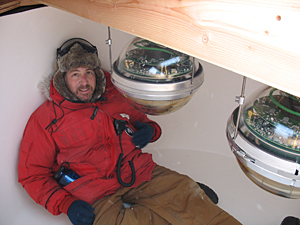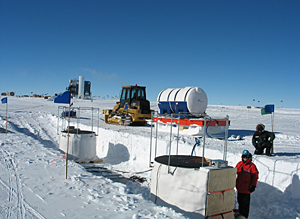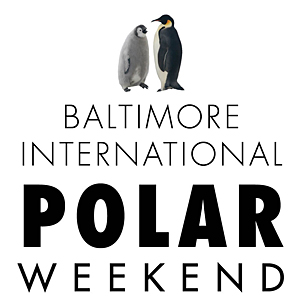

- Rozovsky wins prestigious NSF Early Career Award
- UD students meet alumni, experience 'closing bell' at NYSE
- Newark Police seek assistance in identifying suspects in robbery
- Rivlin says bipartisan budget action, stronger budget rules key to reversing debt
- Stink bugs shouldn't pose problem until late summer
- Gao to honor Placido Domingo in Washington performance
- Adopt-A-Highway project keeps Lewes road clean
- WVUD's Radiothon fundraiser runs April 1-10
- W.D. Snodgrass Symposium to honor Pulitzer winner
- New guide helps cancer patients manage symptoms
- UD in the News, March 25, 2011
- For the Record, March 25, 2011
- Public opinion expert discusses world views of U.S. in Global Agenda series
- Congressional delegation, dean laud Center for Community Research and Service program
- Center for Political Communication sets symposium on politics, entertainment
- Students work to raise funds, awareness of domestic violence
- Equestrian team wins regional championship in Western riding
- Markell, Harker stress importance of agriculture to Delaware's economy
- Carol A. Ammon MBA Case Competition winners announced
- Prof presents blood-clotting studies at Gordon Research Conference
- Sexual Assault Awareness Month events, programs announced
- Stay connected with Sea Grant, CEOE e-newsletter
- A message to UD regarding the tragedy in Japan
- More News >>
- March 31-May 14: REP stages Neil Simon's 'The Good Doctor'
- April 2: Newark plans annual 'wine and dine'
- April 5: Expert perspective on U.S. health care
- April 5: Comedian Ace Guillen to visit Scrounge
- April 6, May 4: School of Nursing sponsors research lecture series
- April 6-May 4: Confucius Institute presents Chinese Film Series on Wednesdays
- April 6: IPCC's Pachauri to discuss sustainable development in DENIN Dialogue Series
- April 7: 'WVUDstock' radiothon concert announced
- April 8: English Language Institute presents 'Arts in Translation'
- April 9: Green and Healthy Living Expo planned at The Bob
- April 9: Center for Political Communication to host Onion editor
- April 10: Alumni Easter Egg-stravaganza planned
- April 11: CDS session to focus on visual assistive technologies
- April 12: T.J. Stiles to speak at UDLA annual dinner
- April 15, 16: Annual UD push lawnmower tune-up scheduled
- April 15, 16: Master Players series presents iMusic 4, China Magpie
- April 15, 16: Delaware Symphony, UD chorus to perform Mahler work
- April 18: Former NFL Coach Bill Cowher featured in UD Speaks
- April 21-24: Sesame Street Live brings Elmo and friends to The Bob
- April 30: Save the date for Ag Day 2011 at UD
- April 30: Symposium to consider 'Frontiers at the Chemistry-Biology Interface'
- April 30-May 1: Relay for Life set at Delaware Field House
- May 4: Delaware Membrane Protein Symposium announced
- May 5: Northwestern University's Leon Keer to deliver Kerr lecture
- May 7: Women's volleyball team to host second annual Spring Fling
- Through May 3: SPPA announces speakers for 10th annual lecture series
- Through May 4: Global Agenda sees U.S. through others' eyes; World Bank president to speak
- Through May 4: 'Research on Race, Ethnicity, Culture' topic of series
- Through May 9: Black American Studies announces lecture series
- Through May 11: 'Challenges in Jewish Culture' lecture series announced
- Through May 11: Area Studies research featured in speaker series
- Through June 5: 'Andy Warhol: Behind the Camera' on view in Old College Gallery
- Through July 15: 'Bodyscapes' on view at Mechanical Hall Gallery
- More What's Happening >>
- UD calendar >>
- Middle States evaluation team on campus April 5
- Phipps named HR Liaison of the Quarter
- Senior wins iPad for participating in assessment study
- April 19: Procurement Services schedules information sessions
- UD Bookstore announces spring break hours
- HealthyU Wellness Program encourages employees to 'Step into Spring'
- April 8-29: Faculty roundtable series considers student engagement
- GRE is changing; learn more at April 15 info session
- April 30: UD Evening with Blue Rocks set for employees
- Morris Library to be open 24/7 during final exams
- More Campus FYI >>
11:01 a.m., March 26, 2009----University of Delaware research in Antarctica will be among the cutting-edge science featured at the International Polar Weekend, April 4-5, at the Maryland Science Center in Baltimore.
Sponsored by the National Science Foundation, the event will offer activities for children and adults, from hands-on demonstrations of polar clothing to show what it takes to work safely on the world's coldest, highest, and driest continent, to talks by experts on penguins and other topics, art exhibits, and films.
Included will be the premiere of “Frozen,” a NASA multimedia presentation for NOAA's Science on a Sphere, which uses computers and video projectors to show planetary-scale environmental data on a six-foot-diameter animated globe.
Xinhua Bai, associate scientist, and James Roth, senior electronics instrument specialist, veteran travelers to the South Pole from the UD Department of Physics and Astronomy, will have a display on “IceCube,” a giant telescope being built deep in the Antarctic ice to look for neutrinos from far away in the universe.
Formed during such cataclysmic cosmic events as exploding stars and colliding galaxies, these elusive particles may hold important clues to the origins of the universe.
The researchers are part of a team from UD's Bartol Research Institute that is installing the telescope's surface array of detectors, known as “IceTop.” For the past two years, the team has shared their experiences with the public in a popular blog.
One of the detectors and a freeze control unit will be on display, as well as a laptop for showing how the telescope works.
The activities are open to the public and free of charge with paid admission to the Maryland Science Center. Located at Baltimore's Inner Harbor, it was named one of the nation's ten best science centers for families by Parent's Magazine in 2008.
The public events coincide with a meeting on the Antarctic Treaty governing international cooperation and scientific research on the southernmost continent, to be attended by delegates from more than 40 countries.
The meeting marks the official close of the International Polar Year (IPY), which involved scientists from over 60 countries in research in the polar regions. The National Science Foundation, the lead U.S. agency for the IPY, coordinates all U.S. research on Antarctica.
Article by Tracey Bryant



